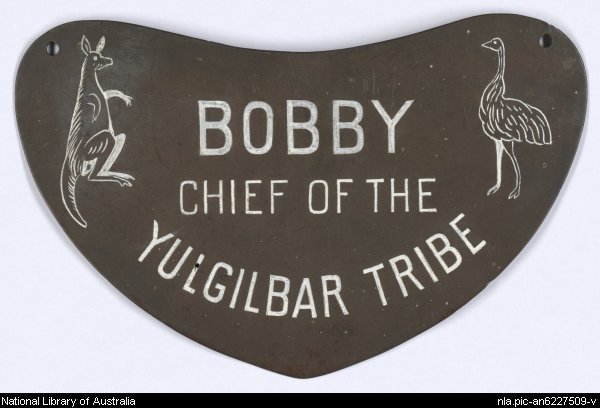Early Contact
Early contact between Aboriginal and non-Aboriginal people occurred during exploration of the coast and then search for forest areas for logging, as well as some early movement of stock. Gradually more stock were moved into the cleared area around the Clarence. To foster relations with the local people presents and privileges were given to those members of the Bundjalung community who were valued by the non-Aboriginal people. Below is a breast plate made for a Bundjalung man. This elliptical king plate or gorget was made under the direction of Dame Mary Gilmore's father and his friend Edward Ogilvie of Yulgilbar Station on the Clarence river, and given to Bobby (see King plates : a history of Aboriginal gorgets by Jakelin Troy, Canberra: Aboriginal studies Press, 1993)

|
| Aboriginal king plate inscribed: Bobby, chief of the Yulgilbar tribe from The National Library of Australia (Reference 16) |
Geography What the area is like and how this affected the initial contact with non-Aboriginal people.
The People The Europeans were impressed with the appearance of the people of the region.
Wollumbin the book Short comment on the effect of invasion by non-Aboriginal settlers in the Bundjalung areas
Cedar Cutters Extract on contact with cedar cutters who first moved into area.
Big River History of non-Aboriginal people who came early to the Clarence and their views on the local people.
Abode of Demons Fear between Aboriginal and non-Aboriginal people was common in the early years.
Early NewsPaper articles History 1830-1880 from the Grafton newspaper written in 1957
The Olgilvie's of Yulgibar Brief account of Edward Olgilvie's relation with local people
Comments